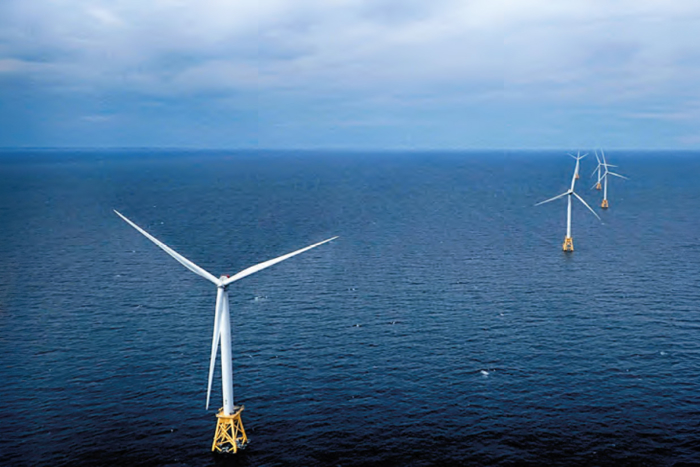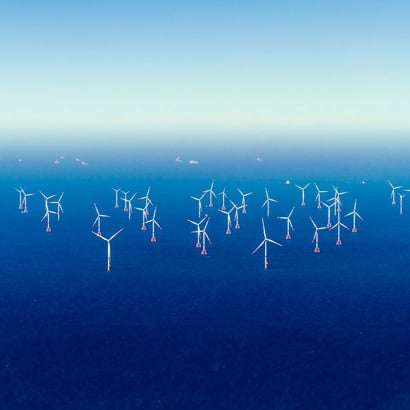Lloyd’s Register North America Inc (LR) and Northeast Technical Services Co Inc (NETSCo) have set up a joint development project (JDP) to design a Jones Act-compliant wind turbine installation vessel (WTIV). These highly sophisticated ships, together with a range of other service and support craft, are now required urgently as the U.S. ramps up its drive to develop offshore wind.
Since this project was announced in December last year, offshore wind has received a major boost from President Joe Biden’s new administration. The U.S. has already leapt to number one in the world in terms of planned investment and has set out a strategy aiming to raise energy production from today’s modest 30MW to a massive 33GW by 2035.
Construction challenge
However, with the exception of one WTIV under construction for Dominion’s Coastal Virginia wind farm, the vessels required for wind farm construction and support do not yet exist. The race is on to develop new designs that are suitable for construction in U.S. shipyards and are capable of installing the vast components required by today’s wind farm developers. At the same time these designs need to be financially viable for shipowners interested in entering this market.
Dimensions could prove to be one constraint. The largest WTIVs must now be capable of handling turbines as large as 14MW, manufactured by companies like Boston-based General Electric and Spanish-German renewables specialist, Siemens Gamesa. They are about 250m high, with rotor diameters of more than 220m. The size and weight of subsea foundations have increased in tandem.
Concept design
The JDP will see NETSCo’s engineers and naval architects drawing up a novel and cost-effective concept design for a WTIV capable of meeting wind farm development requirements along the U.S. East Coast and in the Great Lakes. Parameters will include crane capacity, deck space, and operational water depth. The design will also take into consideration future stages of detailed and production design for U.S. shipyards, thereby ensuring that the vessels can be built in the U.S., as the Jones Act requires. This concept takes into consideration LR’s input from the extensive work around port facilities in the U.S. North East, to ensure it is suitable for the intended operational profile.
Working in parallel, LR will review and evaluate the design development to ensure that the WTIV meets all applicable rules and regulations, including the U.S. Coast Guard’s Code of Federal Regulations. With its extensive experience in the sector, LR will also ensure that the design complies with all relevant international codes and standards.
Challenge for developers
NETSCo Vice President, Jan Flores, spoke about the benefits of collaborating with LR. “The lack of Jones Act-qualified compliant wind turbine installation vessels has become a major challenge for offshore wind turbine developers,” he said. “This collaboration was a cumulation of efforts to better support the offshore wind turbine market with a Jones Act-qualified vessel alternative, as well as offering conversion options for vessels that have been drydocked during this economic downturn. We look forward to our continued work with LR for their guidance and expertise in classification, compliance and advisory services in the offshore industry.”
LR’s Americas Marine & Offshore VP of Commercial Operations, Rafael Riva, noted the pressing requirement for WTIVs in the U.S. where there are no compliant vessels available to developers –other than Dominion- at present. He also commented on the importance of port logistics in handling WTIVs and noted LR’s experience in undertaking advisory work for U.S. East Coast ports which will be involved in the sector’s rapid development.
U.S. waters offer spectacular opportunities
The U.S. has only one offshore wind farm in operation today – the five-turbine Block Island Wind Farm, close to Rhode Island. Experts say that it is this part of the country’s coastline that is likely to be a first fix for energy companies seeking a foothold in what could soon become a multi-billion dollar renewables market.
U.S. energy companies have not proved front-runners so far. Most of the interest in renewable energy generally, and offshore wind in particular, has come from European energy firms which recognise the potential scale of the U.S. market. LR’s Americas Marine & Offshore VP of Commercial Operations, Rafael Riva, explains that the five-turbine Block Island facility was developed by Deepwater Wind, now owned by Danish energy multinational, Ørsted. Construction was undertaken using the Fred Olsen Windcarrier jack-up installation vessel, Brave Tern, which flew the Maltese flag. But the equipment in that instance wasn’t shipped between two U.S. ports, and therefore there wasn’t a requirement for the vessel to comply with the Jones Act. Things have changed since then, and it is now expected that most of the wind farm components will be manufactured and shipped from U.S. ports.
It is now more than four years since Block Island started generating renewable power, but it is still the only operating wind farm in the U.S. According to Riva there are 19 commercial projects currently under consideration, however, and things should accelerate rapidly from here. He tells Horizons that the U.S. is generating widescale interest among international energy majors, particularly those at the forefront of offshore wind developments in other locations.
The country’s North East Coast is their focus for the moment and, so far, developers are looking at locations where fixed installations are feasible. However, Riva points out that new lease areas are coming up at regular auctions and there is growing interest in the Gulf of Maine, for example, where waters are deep and the wind is strong. Floating technology is likely to be required in that region, he suggests. It is early days in the new Administration, but Riva says that some experts anticipate that leases could soon become available in the Gulf of Mexico. There, the waters are relatively shallow – typically 45-60m – so fixed installations would be suitable. Shoreside port infrastructure is already in place, he points out, and geared to the support of offshore energy operations.
Meanwhile, on the West Coast, the narrow continental shelf drops off sharply into the Pacific Ocean. Although there is significant potential, Riva believes offshore development will take longer as floating technology will definitely be required for all the developments in the West Coast area.

Press release
16 Dec 2020
LR and NETSCo to develop wind turbine installation vessel
The Jones Act compliant vessel will represent an essential development to support the U.S. offshore wind industry.
Read the press release







